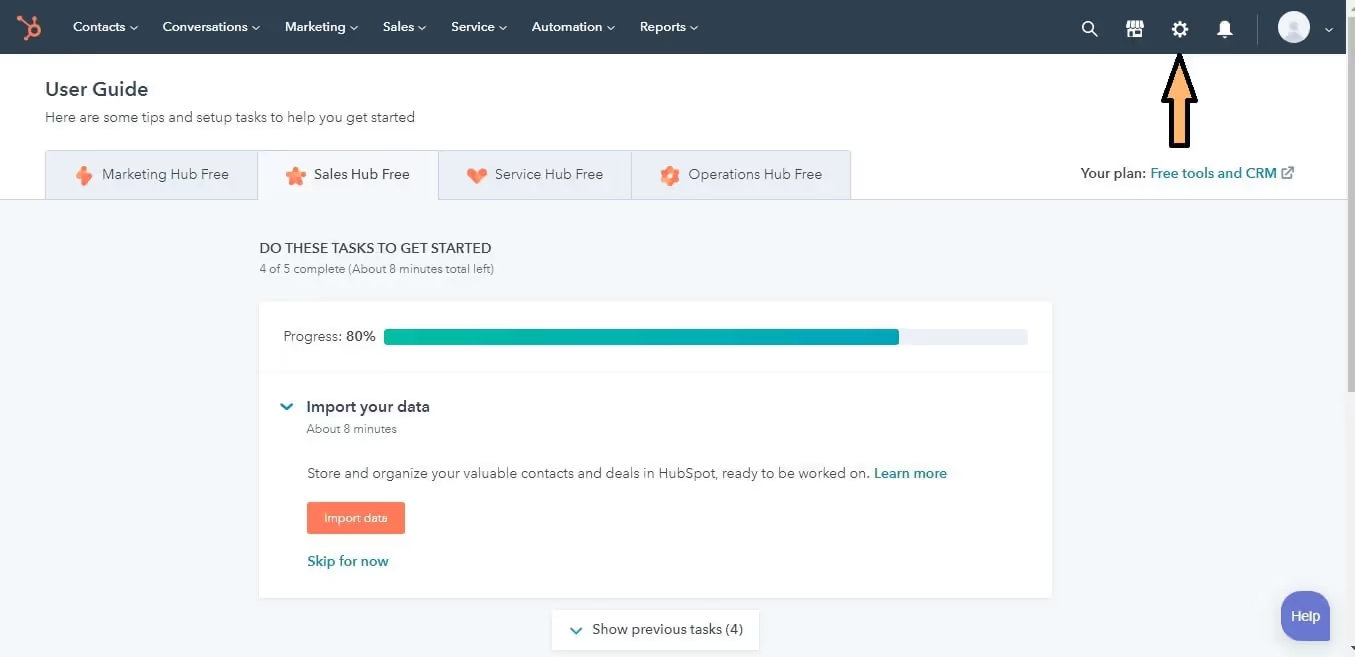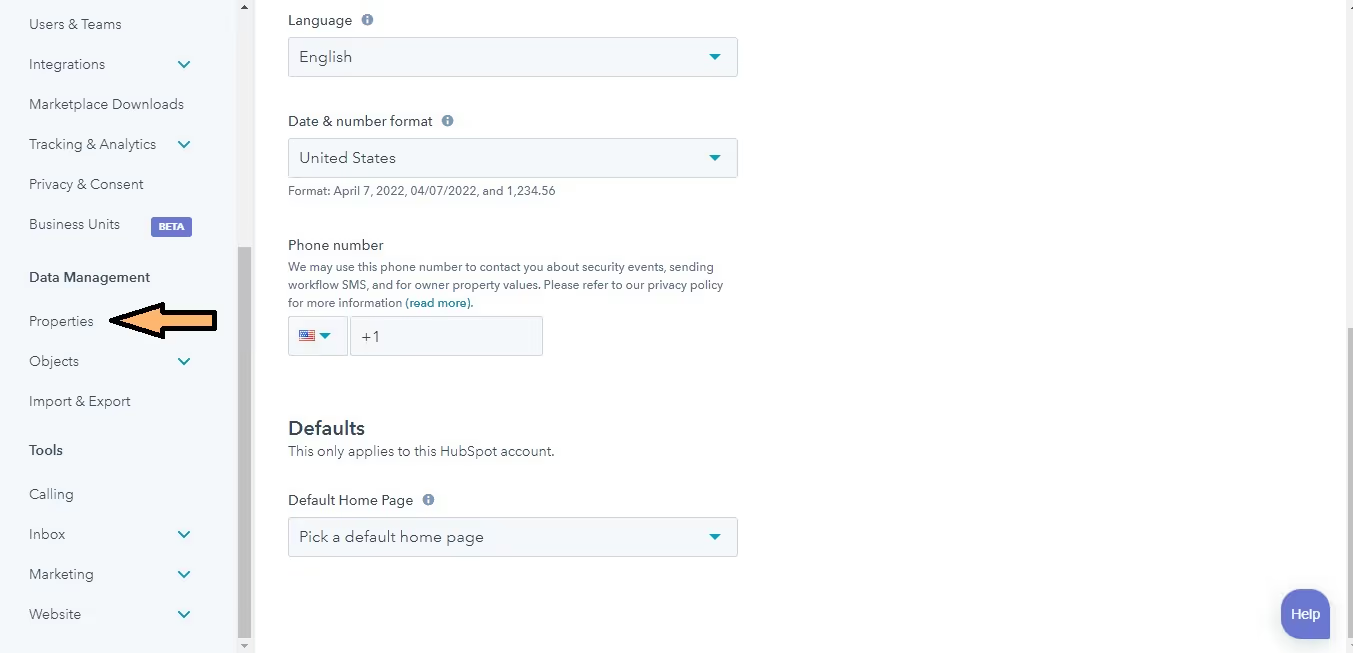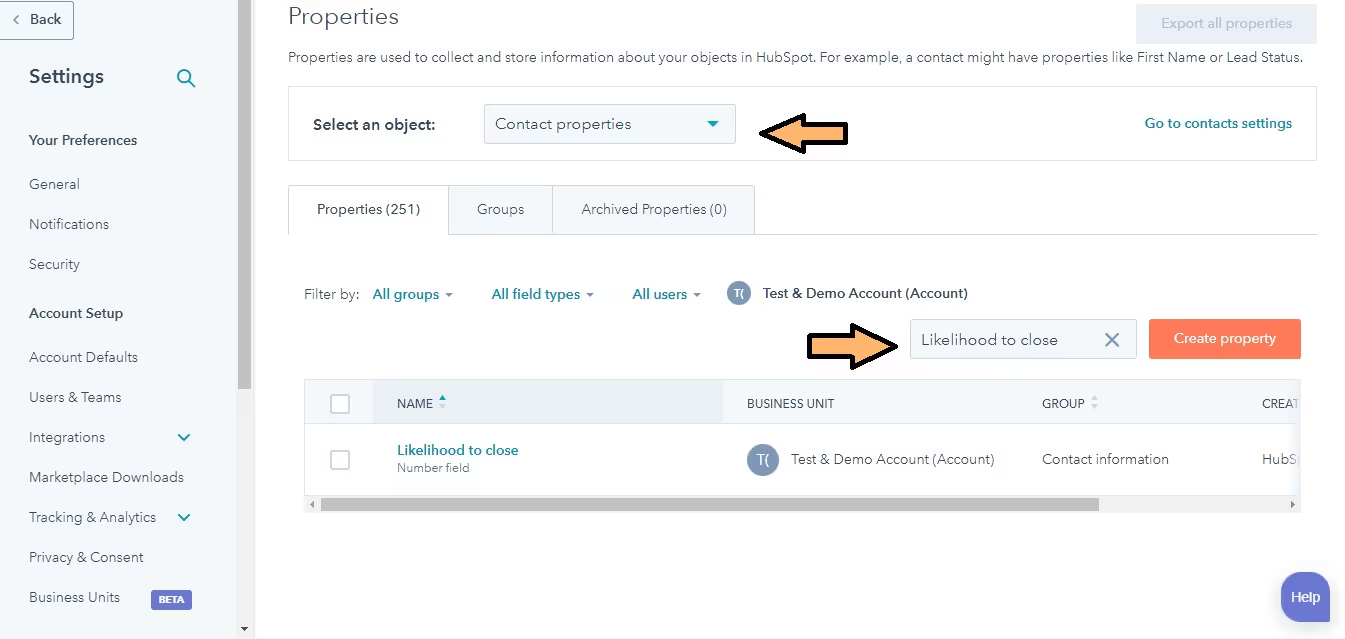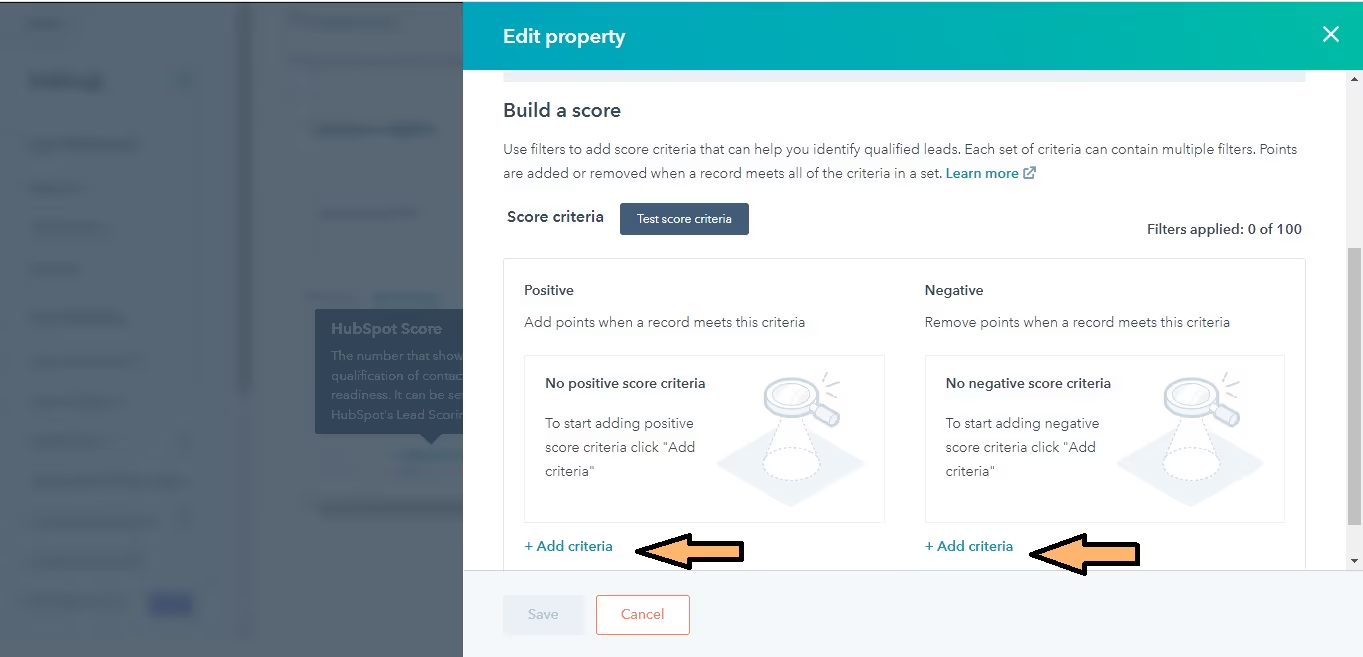How to Use HubSpot Lead Scoring: A Step-by-Step Guide
Use predictive lead scoring software to automate lead prioritization with data from form submissions, page views, email interactions, and more.

Learn how to master HubSpot lead scoring with our comprehensive step-by-step guide. Enhance your lead management strategy by effectively identifying and nurturing sales-qualified leads, ensuring a smooth handoff from marketing to sales, and boost sales with expert tips and detailed instructions.
Can you do Lead Scoring in Hubspot ?

Yes, you can do lead scoring in HubSpot.
HubSpot's lead scoring feature allows you to qualify leads effectively by creating customized scoring systems. You can set up to 25 different scoring models to evaluate and rank your leads based on various criteria, such as demographic information and engagement behavior.
Lead Scoring helps transform marketing qualified leads (MQLs) into sales qualified leads (SQLs) by identifying and prioritizing the most promising prospects. By implementing a dynamic lead scoring system, you ensure that your sales and marketing teams are aligned, focusing their efforts on leads with the highest potential for conversion.
What is Lead Scoring ?
Lead scoring provides a prioritization framework that meticulously ranks leads according to their likelihood of converting into paying customers, ensuring that your efforts are targeted where they matter most.
This methodology uses a scale to represent the perceived value that each prospect represents for the organization. By assigning numerical values to certain behaviors or levels of engagement, companies can prioritize prospects, respond appropriately and increase the conversion rate of these prospects into customers.
Learn more about the concept of lead scoring in the video below.
Why HubSpot’s Lead Scoring ?
HubSpot offers one of the most robust lead scoring systems available, using a point-based approach that combines demographic data (such as job title and company size) with behavioral data (like interactions with your brand or products).
This systematic and quantifiable method enables more efficient and targeted management of potential customers, allowing you to nurture your leads effectively.
HubSpot's lead scoring system is particularly effective in identifying and prioritizing sales qualified leads. By analyzing both demographic and behavioral data, it helps in determining which leads are ready to be handed off from marketing to sales. This ensures that your sales team focuses on leads with the highest potential, improving conversion rates and overall sales efficiency.
The Anatomy of a Lead Score
As mentioned earlier, lead scoring evaluates a lead’s potential value using a blend of demographic and behavioral data. By assessing factors like industry relevance and decision-making abilities, positive scores are assigned, enhancing the understanding of a lead’s potential value.
Tips: make sure you update your HubSpot contact properties effortlessly by using the HubSpot LinkedIn integration while your sales are prospecting.
The lead scoring process helps in identifying sales-qualified leads, which are then prioritized for sales engagement. However, negative scoring also plays a crucial role. Factors such as lack of decision-making authority, invalid contact details, or inactivity are assigned negative scores.
This approach ensures a balanced evaluation, helping to filter out low-probability leads and refine your marketing strategy.
Crafting Your Lead Scoring Model

Creating an effective lead scoring model requires:
- A comprehensive review of HubSpot contact properties
- Identifying sales qualified leads is a crucial part of crafting an effective lead scoring model.
- A deep understanding of parameters that contribute to a lead’s value
- A collaborative effort between sales and marketing teams.
Setting Up Scoring Criteria
To set up effective scoring criteria, it’s important to consider both explicit demographic data and implicit behavioral data. Categorizing leads into marketing qualified leads (MQLs), sales qualified leads (SQLs), and product qualified leads (PQLs) is crucial for an organized sales funnel.
A sales qualified lead is particularly important as it indicates a lead that has been vetted by the marketing team and deemed ready for a direct sales follow-up, ensuring that the sales team focuses on high-potential prospects.
Tip: Do not only include positive criteria, but also negative criteria to account for disengaged prospects. Factors such as lack of decision-making power, invalid contact details or inactivity should be given negative ratings. In HubSpot, lead scoring criteria can be defined using up to 100 groups of filter criteria, allowing great flexibility in the scoring conditions that have an impact on the score.
When setting up scoring criteria in HubSpot, keep in mind this capability is tied specifically to contacts and is currently unavailable within the HubSpot Leads Object.
Assigning Points for Lead Actions
Assigning positive points for lead actions is crucial. Some examples of lead actions include:
- Visiting your website
- Downloading gated content
- Requesting a demo or consultation
- Attending a webinar or event
- Lead from LinkedIn ads
- Engaging with your social media posts (LinkedIn, Instagram etc.)
- Interacting with your brand’s tweets or post shares
- High email engagement, particularly with high-value emails
The image below illustrates a sample lead scoring model, showing how various demographic and behavioral actions are assigned points to reflect lead potential accurately.

These actions are significant indicators of a lead’s interest and readiness to engage, HubSpot will update the contact property original source according to these events. Including a variety of interactions helps gauge a lead’s overall alignment and engagement with your brand. This comprehensive view provides valuable insights into their potential readiness for further sales engagement.
Balancing Positive and Negative Factors
While positive scoring attributes are crucial, it’s equally important to consider negative scoring. Techniques like score degradation help to avoid inflated scores and filter out leads that become inactive or unfit for your sales pipeline.
Balancing these positive and negative factors helps in identifying sales qualified leads, ensuring that only the most promising prospects are passed on to the sales team.
Negative points can be assigned to certain undesirable behaviors or attributes, while positive points can be assigned to desirable ones.
By considering positive and negative attributes, it enables you to prioritize leads effectively, even amongst those with similar levels of engagement, by excluding non-prospects and adjusting the threshold of positive actions needed for sales team notification.
This balance between positive and negative scores ensures that leads are prioritized according to your business goals and buyer personas.
Learn more about how to add positive and negative criteria in the video below.
Predictive vs. Manual: Choosing Your Scoring Approach
When it comes to HubSpot, you have the power of choice between predictive scoring and manual scoring.
Both scoring approaches can help in identifying sales qualified leads, ensuring that the most promising prospects are prioritized and nurtured before being passed on to the sales department.
Predictive Scoring
Predictive lead scoring utilizes machine learning to analyze hundreds of different data points, automating the lead prioritization process. It leverages data from past customers and current prospects to identify patterns and predict the conversion probability for future leads.
The image below illustrates how predictive lead scoring combines your data and external data with machine learning to generate scored leads for segmentation, ordering, and prioritization.

Advantages of Predictive Lead Scoring:
- Immediate Implementation
- Elimination of Human Error by relying on Hard Data
- Increasing Accuracy of the Model Over Time
However, predictive scoring isn’t without its limitations. Examples include:
- Lack of Industry Adaptability
- Opaque Process
Manual Scoring

Manual lead scoring in HubSpot allows for customizable point assignments based on defined criteria. This approach requires collaboration between the marketing and sales departments to select the most relevant attributes for scoring.
Once these attributes are carefully chosen, numerical scores are assigned based on their importance. HubSpot then uses these criteria to score leads, providing a flexible alternative to predictive scoring.
Advantages of Manual Lead Scoring:
- Customizable Criteria
- Tailored to Specific Needs
- Transparent Process
Segmenting Leads with Multiple Scores
Segmenting your leads using multiple scores allows for more accurate targeting and prioritization. This can be particularly beneficial when dealing with new audiences, product lines, or different sales approaches like up-selling and cross-selling.
By segmenting leads with multiple scores, you can identify sales-qualified leads more effectively, ensuring that only the most promising prospects are passed on to the sales department.
Segmenting can also help route leads to the right sales teams based on buyer fit and interest in specific tools. Different prospects can be held to different scoring requirements based on factors such as:
- industry
- company size
- annual revenue
- email domain
- custom properties
Segmenting your audience data based on common themes can refine lead scoring and messaging, particularly for businesses offering multiple products.
Implementing Lead Scoring in HubSpot
Predictive Lead Scoring
To set up a predictive lead scoring model in HubSpot:
- Click on Settings

- Go to Properties

- Search for Likelihood to close and Contact properties

Setting up predictive lead scoring in HubSpot helps in identifying sales qualified leads by prioritizing and nurturing them before passing them on to the sales department.
This approach also supports B2B sales forecasting by providing accurate predictions on lead conversions.
The likelihood to close will give you a score that will show the probability of a contact converting within the next 90 days.
HubSpot has calculated this score by using contact properties and how the contact has been interacting with your business. A score of 22 would mean that there is a 22% chance that the contact will convert in the next 90 days.
Manual Lead Scoring
To set up a manual lead scoring model in HubSpot:
- Click on Settings
Setting up manual lead scoring in HubSpot helps in identifying sales qualified leads by prioritizing and nurturing them before passing them on to the sales department.

- Go to Properties

- In the search bar, write “Hubspot Score” and click on the property

- Start adding your criteria, this would include the positive and negative attributes on which you want to score your leads.

- Save and Implement
Customizing Lead Scoring in HubSpot
In HubSpot, you can customize the default HubSpot score contact property and create custom score properties for contacts, companies, and deals if you have Professional and Enterprise accounts. This customization provides flexibility in optimizing your sales and marketing efforts.
Customizing lead scoring in HubSpot helps in identifying sales qualified leads by prioritizing and nurturing them before passing them on to the sales department.
To set criteria for your HubSpot score or custom score property:
- Navigate to Settings.

- Go to Properties.

- Search for and click on the property name you wish to set criteria for.
- Set criteria that will add or subtract points.


- Test these criteria by selecting a contact name and viewing which criteria they met.

- Save and Implement
All records, including those with existing scores, will be reevaluated when criteria are saved, with scores updated to reflect new criteria. Remember to maintain clear documentation of the lead scoring criteria and any changes made to provide transparency and facilitate ongoing optimization.
Fine-Tuning Your Lead Scoring System
Fine-tuning your lead scoring system is a continuous process. Here are some steps to help you optimize it and improve the efficiency of your sales process:
Fine-tuning the lead scoring system helps in identifying sales qualified leads, ensuring that only the most promising prospects are passed on to the sales team.
- Regularly review and adjust lead scoring criteria to ensure alignment with current business goals and market trends.
- Automate the lead scoring process to improve efficiency and accuracy.
- Use A/B testing to test different scoring models and identify the most effective criteria.
- Implement predefined workflows to streamline the lead qualification process.
Utilizing Lead Scores for Marketing Automation
HubSpot’s lead scoring isn’t just about prioritizing leads - it can also be a powerful tool in marketing automation. Here are some ways you can use lead scoring in your marketing automation workflows:
- Notify the sales team when a lead hits a specific score
- Send specific content to leads via email once they hit a certain score
- Trigger specific actions in your marketing automation workflows based on lead scores
Utilizing lead scores for marketing automation helps in identifying sales qualified leads, ensuring that only the most engaged prospects are passed on to the sales department.
HubSpot’s lead scoring models automatically adjust a lead’s score based on specific activities such as form submissions or whitepaper downloads, reflecting the engagement level of the prospect.
Furthermore, HubSpot’s lead scoring system facilitates testing of score criteria for contacts, offering a practical view of how scores are calculated prior to implementation.
By integrating lead scoring models within your marketing automation strategy in HubSpot, you can reduce points for interactions as they become less recent, helping maintain a focus on the more engaged leads.
Sales Alignment Through Lead Scoring

Aligning your sales and marketing team efforts can significantly improve your lead scoring system. By establishing feedback loops, you can incorporate insights on lead quality and conversion rates into the adjustment of scoring criteria.
Providing comprehensive training to sales teams on the lead scoring process and its use in automating sales prioritization can refine the sales approach and ensure that teams do not overlook quality leads.
Incorporating the sales team’s understanding of the ideal customer profile into manual lead scoring and establishing clear buyer personas enables sales representatives to:
- target and prioritize the most promising leads effectively
- establish clear thresholds for the transition from Marketing Qualified Lead (MQL) to Sales Qualified Lead (SQL) in the lifecycle stage
- track lead status to see the progress of your sales
- maintain consistent communication on these criteria
This can significantly enhance the handoff and qualification of marketing qualified leads, ensuring a smoother transition to working with qualified leads.
Reporting and Analyzing Lead Quality
Understanding the effectiveness of your lead scoring model requires robust reporting and analysis. HubSpot’s reporting tools can help you achieve this by:
- Visualizing Lead Distribution: See how leads are distributed across different scoring ranges to identify trends in lead quality.
- Evaluating Conversion Rates: Analyze the conversion rates of leads with different scores to determine if your scoring model accurately predicts lead quality.
- Incorporating Long-Term Trends: Use historical data to refine your lead scoring model, ensuring it evolves with market changes and business goals.
Reporting and analyzing lead quality helps in identifying sales qualified leads, which are crucial for effective lead handoff from marketing to sales.
Feedback from the sales team is crucial here. Their insights into lead quality and conversion success can help refine scoring criteria, making your lead scoring model more predictive and effective.
Enhancing Lead Scoring with External Data
Integrating external data sources can significantly enhance your lead scoring metrics. By incorporating AI and external data patterns, you can achieve greater precision and accuracy.
Enhancing lead scoring with external data helps in identifying sales qualified leads, ensuring that only the most promising leads are passed on to the sales team. Useful external data sources include:
- Online Behaviors: Track how leads interact with your website and other online platforms.
- Email Engagements: Measure how leads engage with your email campaigns.
- Form Submissions: Analyze the information provided by leads in your forms.
- Social Media Interactions: Monitor interactions on social media to gauge interest and engagement.
- CRM Information: Use data from your CRM to enrich lead profiles and improve scoring accuracy.
Tools like Segment can integrate CRM data and marketing automation platforms with HubSpot, allowing for dynamic updates to lead scores. This comprehensive approach ensures your lead scoring system is based on the most accurate and relevant data.
Overcoming Common Lead Scoring Challenges
Despite its benefits, lead scoring can present challenges. To overcome these, consider the following strategies:
Overcoming these common lead scoring challenges helps in identifying sales qualified leads, ensuring that only the most promising prospects are passed on to the sales team.
- Use Advanced Tools: Integrate tools like MadKudu to enhance your lead scoring capabilities. These tools employ statistical methods to qualify leads, reducing manual effort.
- Ethical Data Use: Ensure you respect prospects’ privacy by ethically collecting and using data. This maintains trust and improves the quality of your leads.
- Regular Disqualification: Periodically disqualify leads that are unlikely to convert. This saves time and resources, focusing efforts on the most promising leads.
Automated lead scoring with tools like MadKudu can address many manual scoring challenges, providing a more efficient and accurate system for qualifying leads.
Key Takeaways
- HubSpot’s lead scoring uses a point-based system to rank leads by combining demographic data with behavioral data, allowing for precise and targeted management of potential customers.
- Identifying sales qualified leads is crucial as it ensures that only the most promising leads are passed on to the sales department, optimizing the sales process and improving conversion rates.
- Effective lead scoring models in HubSpot require setting up balanced positive and negative scoring criteria, which includes considering explicit demographic info as well as implicit behavioral data along with score degradation techniques.
- Lead scoring is not just a one-time setup but a continuous process in HubSpot, involving regular reviews and adjustments to criteria, using analytics for optimization, and aligning closely with sales feedback for enhanced accuracy.
Frequently Asked Questions
How can I set up scoring criteria in HubSpot?
To set up scoring criteria in HubSpot:
- Access Settings
- Navigate to Properties
- Scroll or search for "HubSpot score" or your custom score property, and click on the property name
- Click "Add criteria" under the Positive or Negative sections to set criteria that will add or subtract points from the score respectively.
By following these steps, you can effectively manage and tailor your lead scoring to prioritize the most valuable leads for your business.
Is HubSpot lead score automatically calculated?
Yes, HubSpot lead score can be automatically calculated using their proprietary AI-based algorithm, which assesses the potential for a lead to become a customer. No manual editing of lead scoring properties is permitted.
Can you do lead scoring in HubSpot?
Yes, you can do lead scoring in HubSpot by using the Hubspot Score property, which allows you to award or deduct points for specific fields in a few clicks, enabling data-backed prioritization and timely follow-ups for closing more deals.
What is the typical lead scoring model?
The typical lead scoring model is based on important customer details and helps to focus on contacts most likely to convert, optimizing marketing efforts.
How is lead score calculated in HubSpot?
Predictive lead scoring in HubSpot is calculated by analyzing the similarities across your existing customers and cross-referencing that information with leads that did not convert. HubSpot uses this data to assign each contact in your database a probability of closing within the next 90 days, providing an accurate lead score to help you prioritize your leads effectively.
